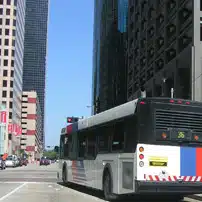Aggressive driving occurs whenever a driver commits moving traffic offenses that endanger people and property. Speeding may be the first thing that comes to your mind when you think of this behavior, and it is the most common form of aggressive driving, according to the Insurance Information Institute (III). There are several other driving habits that increase the risk of altercations, auto accidents, and crash-related injuries. The more you know about aggressive driving and why it is so common, the more likely you may be to stay cool and collected behind the wheel.
Here are some of the most common moving traffic offenses that are considered aggressive driving:
Careless, Negligent or Erratic Operation of a Vehicle
Every driver has a duty to operate their vehicle in a safe and lawful manner. When they make that choice to drive recklessly, they become a hazard to themselves and others. Reckless driving can be driving drunk, texting while driving, drowsy driving, or any of the behaviors that follow.
Erratic or Improper Lane Changes
Lane changes are generally used to overtake another vehicle. Traffic laws regulate permissible lane changes, depending upon the location, type of road, and direction vehicles are moving. Unlawful or unpredictable lane changes are dangerous and disrupt the safe flow of traffic.
If the passing vehicle does not create enough space when the switch lanes, the vehicle the are passing have to slam on the breaks or worse–may not have time or space to avoid a crash.
Failure to Obey Traffic Signs, Signals, and Laws
The National Highway Traffic Safety Administration (NHTSA) reports an average of 1,500 traffic fatalities occur every year at intersections controlled by traffic lights. More than half of those car accident deaths happen when driver run red lights, and approximately one-quarter are caused by drivers who fail to yield the right of way. Driving laws, signs, and signals create predictable and safe traffic patterns. Without them, our roads would be utter chaos.
Failure to Signal
In Delaware, Title 21 § 4155 states, “A signal of intention to turn or move right or left when required shall be given continuously during not less than the last 300 feet or more than one-half mile traveled by the vehicle before turning.”
You may not think of turning without signaling as a particularly aggressive behavior. Yet when a driver does not use their turn signal, other drivers have no way of predicting their next move—and they respond in time.
Illegal Driving on the Shoulder, Sidewalk, or Median
Driving on any surface not intended for road traffic is another form of aggressive driving. That includes passing on the left or right shoulder, the sidewalk, or the median. The shoulder specifically is used for emergency use only, and sidewalks are designated for pedestrian traffic.
Some drivers confuse a shoulder on the right with a right-turning lane. Turning from the shoulder is not permitted in Delaware, even if the driver is turning into a business or driveway. The only time driving in the shoulder is permissible is when a driver is passing a left-turning motorist on the right. Once they have passed the turning driver, they must return to their lane.
Improper Following
Following too closely, or “tailgating” as it is often called, is an incredibly dangerous and aggressive driving behavior. There are three factors at play in determining how long it takes a vehicle to stop:
- Perception distance: the distance the vehicle travels from the time the driver first observes the event (like the brake lights engaged on the vehicle ahead)
- Reaction distance: the distance the vehicle travels when the driver is prepares to react by moving their foot from the accelerator to the brake
- Braking distance: the distance the vehicle travels from the time the brake is applied to the point the vehicle stops
When a driver tailgates the vehicle in front of them, they cut their available stopping time significantly, increasing the likelihood of a rear-end collision. The chance of serious injuries goes up the faster both vehicles are traveling.
Speeding
If you have any doubts about the dangers of speeding, consider this fact: the risk of a fatal crash doubles for every 10 miles per hour (mph) a vehicle travels over 50 mph. As with tailgating, speeding drastically cuts the time the driver has to identify a hazard and swerve or stop to avoid it.
It is important to note that even if speed limits are posted roadside, drivers must adjust their speed accordingly for the road and weather conditions. That means slowing down when rain, fog, snow, construction, and other hazards are present.
Why Do People Drive Aggressively?
Aggressive driving is an ever-present danger. But why do drivers engage in risky behaviors that lead to car accidents? Several years ago, NHTSA participated in an extensive study to assess the results of aggressive-driving enforcement campaigns. In the report, the agency identifies key factors that contribute to aggressive driving:
- Anonymity
- Running late
- Traffic congestion
- Disregard for others and the law
- Clinical or habitual behavior
For some people, aggressive driving happens in the heat of the moment. They are running late or frustrated by a traffic jam. For others, aggressive driving is a habit they may not break until they get a ticket, or worse, cause an accident.
Anyone who has been driving for some time can probably recall a time where they got frustrated, maybe had a few choice words for another driver, or even made an aggressive gesture.
Knowing why drivers act aggressively can help us all be mindful or of our triggers and take steps to diffuse anger and remain calm and collected in all traffic situations. If you are involved in an accident, stay at the scene, call for medical attention, and report the crash to the police.
Wilmington Car Accident Lawyers at Rhoades & Morrow Represent Clients Injured by Aggressive Drivers
If you or a loved one has been seriously hurt in a crash caused by an aggressive driver, our experienced Wilmington car accident lawyers at Rhoades & Morrow can help. Call us at (302) 427-9500 or inquire online to schedule a free consultation in our convenient locations in Wilmington, Bear, Milford, and Lewes. With offices in three counties, we proudly serve clients across the state of Delaware.





